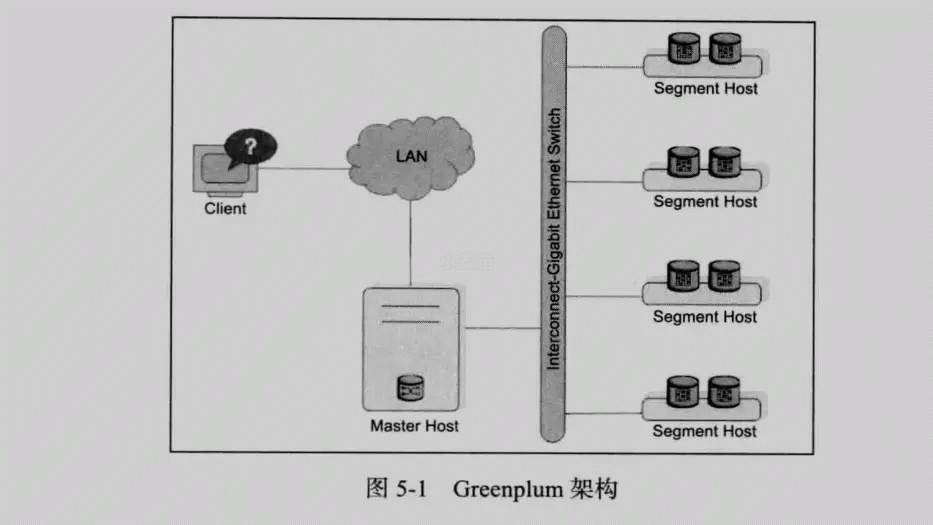合 PG和GreenPlum中的临时表(TEMPORARY TABLE)
Tags: PGGreenPlumPostgreSQL临时表TEMPORARY TABLE
简介
PostgreSQL中的临时表分两种,一种是会话级临时表,一种是事务级临时表。
在会话级临时表中,数据可以存在于整个会话的生命周期中,
在事务级临时表中的数据只能存在于事务的生命周期中。默认创建的是会话级别的临时表。
- 不管是会话级还是事务级的临时表,当会话结束后,临时表会消失(被drop掉),这和Oracle数据库不同。Oracle数据库当会话结束后,数据消失,而表定义依然存在。
- “ON COMMIT” 子句有三种形式,默认使用的是PRESERVE ROWS,即会话临时表:
(1)ON COMMIT PRESERVE ROWS 表示临时表的数据在事务结束后保留,默认值,表示会话级临时表;
(2)ON COMMIT DELETE ROWS 表示临时表的数据在事务结束后truncate掉,表示事务级临时表,事务结束,删除数据;
(3)ON COMMIT DROP 表示临时表在事务结束后删除,表示事务级临时表,事务结束,删除临时表。 - Oracle中的临时表,创建后,虽然各个会话间的数据是互相隔离的,也就是一个会话看不到其他会话的数据,但定义是共用的。而Postgresql中的临时表,创建后,不但不同会话间的数据是相互隔离的,就连临时表的定义也是不同会话间相互隔离的,也就是一个会话创建的临时表,不能被其他会话看到。
- 使用pg_basebackup备份时,不会备份TEMPORARY table和 UNLOGGED table,可以参考:https://www.dbaup.com/pg_basebackupbubeifentemporary-tablehe-unlogged-table.html#pg_basebackup_bu_bei_fenTEMPORARY_table_he_UNLOGGED_table
- PostgreSQL临时表是schema下所生成的一个特殊的表,这个schema的名称为“pg_temp_n”,其中n代表session_id(GP有这个字段,PG没有这个字段),不同的会话数字不同。
- 在PG中,一个会话创建的会话临时表不能被其他会话访问(ERROR: cannot access temporary tables of other sessions)。 但是,在GreenPlum中,一个会话创建的会话临时表是可以被其它会话访问和操作的,需要加上schema。
- 创建临时表的关键字“temporary”可以缩写为“temp”。
- PostgreSQL为了与其他数据库创建临时表的语句保持兼容,还没有“GLOBAL”和“LOCAL”关键字,但两个关键字没有用处。
实验SQL
1 2 3 4 5 6 7 8 9 10 11 12 13 14 | create temp table t_tmp(id int); create temp table t_tmp1(id int) on commit delete rows; select schemaname,tablename,tableowner from pg_tables a where tablename like 't_tmp%'; -- GP查询,PG没有这个字段 select sess_id from pg_stat_activity AS pgsa WHERE pgsa.pid in (pg_backend_pid()); select * from pg_temp_9019501.t_tmp; select * from pg_temp_9019501.t_tmp1; insert into t_tmp values (1); insert into t_tmp1 values (1); |
示例
1、Postgresql 临时表的会话隔离性
session1:创建了临时表t_tmp。
1 2 3 4 5 6 7 8 9 10 11 12 13 14 15 16 17 18 19 20 21 22 23 24 25 26 | lhrdb=# create temp table t_tmp(id int); CREATE TABLE lhrdb=# \d t_tmp Table "pg_temp_4.t_tmp" Column | Type | Collation | Nullable | Default --------+---------+-----------+----------+--------- id | integer | | | lhrdb=# \d List of relations Schema | Name | Type | Owner -----------+-------+-------+---------- pg_temp_4 | t_tmp | table | postgres (1 row) lhrdb=# select schemaname,tablename,tableowner from pg_tables a where tablename='t_tmp'; schemaname | tablename | tableowner ------------+-----------+------------ pg_temp_4 | t_tmp | postgres (1 row) lhrdb=# select pg_backend_pid(); pg_backend_pid ---------------- 4891 (1 row) |
session2:以另一个会话登录相同用户名和数据库,查看session1中创建的临时表,既不能查询表,也不能查看表结构,但可以通过系统视图看到该临时表的存在。
1 2 3 4 5 6 7 8 9 10 11 12 13 14 15 16 17 | lhrdb=# \d Did not find any relations. lhrdb=# select * from t_tmp; ERROR: relation "t_tmp" does not exist LINE 1: select * from t_tmp; lhrdb=# select schemaname,tablename,tableowner from pg_tables a where tablename='t_tmp'; schemaname | tablename | tableowner ------------+-----------+------------ pg_temp_4 | t_tmp | postgres (1 row) lhrdb=# select pg_backend_pid(); pg_backend_pid ---------------- 5033 (1 row) |
2、Posgresql临时表的易挥发性
Oracle中的临时表,一个会话的数据在会话退出时会自动消失,但临时表的定义一旦创建,就会一直存在,直到用户手动删除。而Postgresql的临时表不是这样,虽然会话退出会话数据也会自动消失,但定义也会随着会话的退出而消失,也就是说,Postgresql中的临时表的生命周期最长就是会话生命周期,甚至更短。
首先,退出会话1,然后查询:
1 2 3 4 5 6 7 8 9 10 11 12 13 14 15 16 17 18 19 20 21 22 23 | lhrdb=# select pg_backend_pid(); pg_backend_pid ---------------- 4891 (1 row) lhrdb=# exit C:\Users\lhrxxt>psql -U postgres -h192.168.66.35 -p 15433 -d lhrdb Password for user postgres: psql (13.3) Type "help" for help. lhrdb=# select pg_backend_pid(); pg_backend_pid ---------------- 5673 (1 row) lhrdb=# select schemaname,tablename,tableowner from pg_tables a where tablename='t_tmp'; schemaname | tablename | tableowner ------------+-----------+------------ (0 rows) |
上图是前面session1退出会话后,再次登录查询之前创建的临时表t_tmp,已经查不到了,哪怕是临时表定义也没了。
3、Postgresql临时表数据的易挥发性
Oracle中临时表的数据,会随着会话事务或会话的结束而自动消失,主要看创建临时表时的相关选项。Postgresql临时表中的数据,也有类似的功能,除了通过on commit drop选项可以设置事务结束临时表就消失外,还可以通过on commit相关选项,分别控制临时表的数据在事务结束消失(仅仅数据消失,定义还存在)和会话结束消失(数据和表定义都消失)。
1 2 3 4 5 6 7 8 9 | lhrdb=# create temp table t_tmp(id int) on commit delete rows; CREATE TABLE lhrdb=# lhrdb=# insert into t_tmp values(1); INSERT 0 1 lhrdb=# select * from t_tmp; id ---- (0 rows) |
可以看到,虽然成功创建了临时表,也往其中成功插入了数据,可是再查询数据时,虽然表定义还在,但数据没了,这是因为定义时用了on commit delete rows选项,就是事务结束,数据就消失,这里的insert into语句默认为一个事务,执行完事务就算结束,所以,插入的数据立刻又消失了,如下图,显式的定义了事务的开始和结束,事务期间,插入的数据可以查到:
1 2 3 4 5 6 7 8 9 10 11 12 13 14 15 16 17 18 | lhrdb=# begin; BEGIN lhrdb=*# insert into t_tmp values(1); INSERT 0 1 lhrdb=*# select * from t_tmp; id ---- 1 (1 row) lhrdb=*# insert into t_tmp values(2); INSERT 0 1 lhrdb=*# select * from t_tmp; id ---- 1 2 (2 rows) |





全局临时表可以使用插件:pgtt,可以参考:https://pgfans.cn/a?id=1241